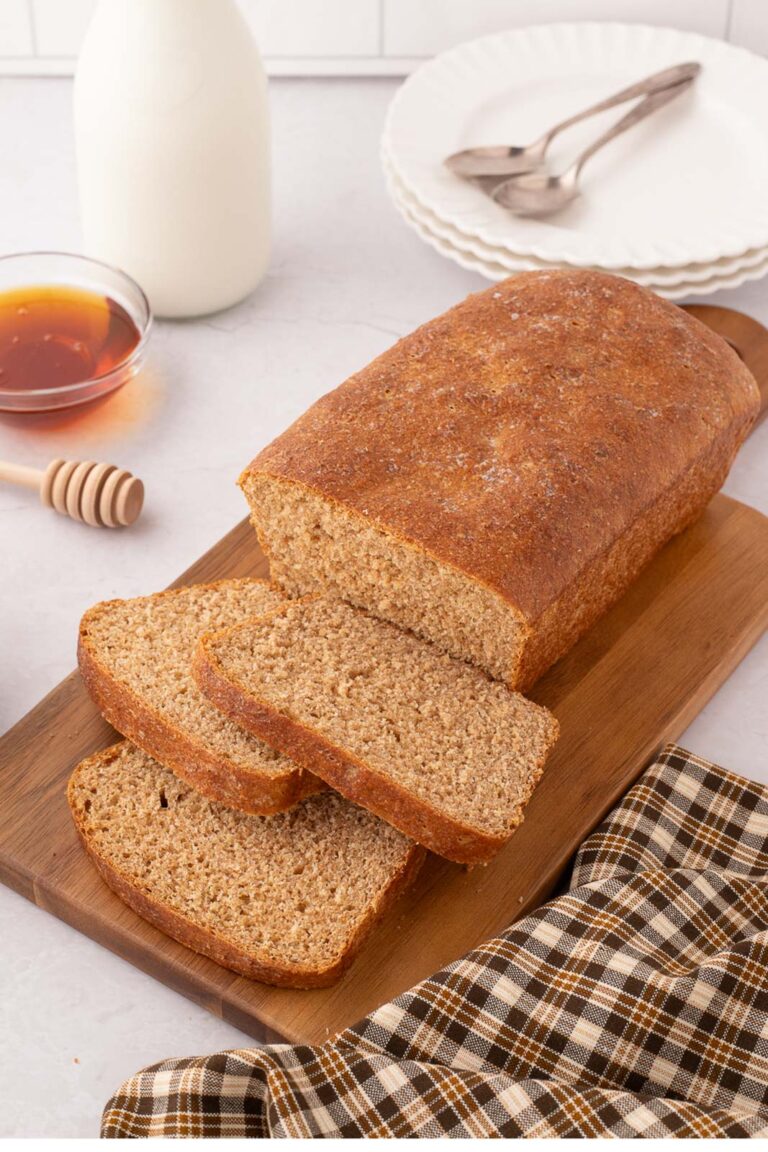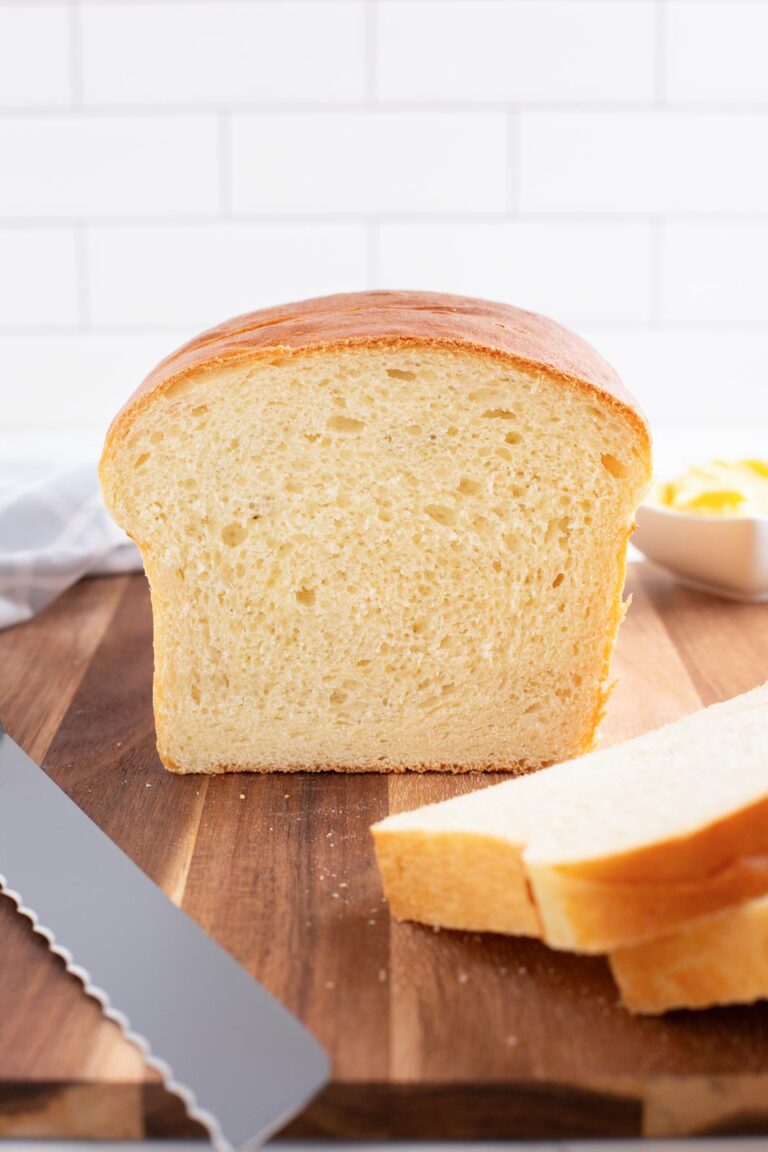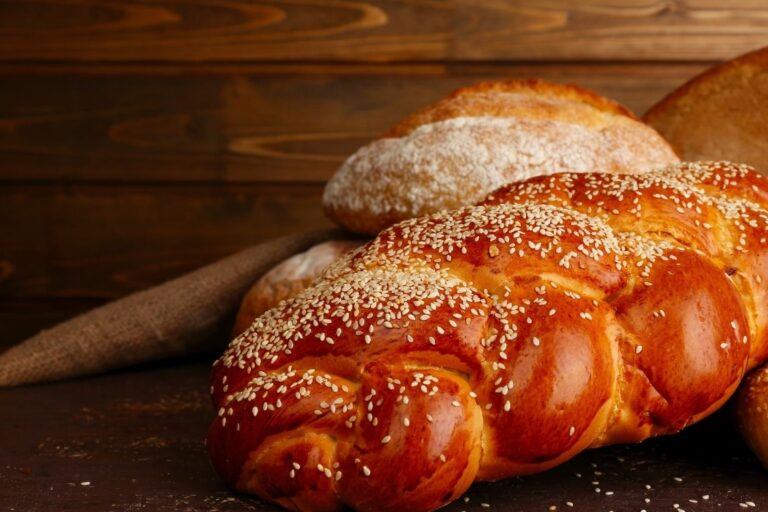The Easiest Sourdough Sandwich Bread (Slow Ferment)
Real sourdough sandwich bread is the perfect way to transition from store bought loaf bread to homemade, deliciously! This recipe is built on a “wild yeast” sourdough starter made from just water and flour and boosts a few more health benefits for your body.
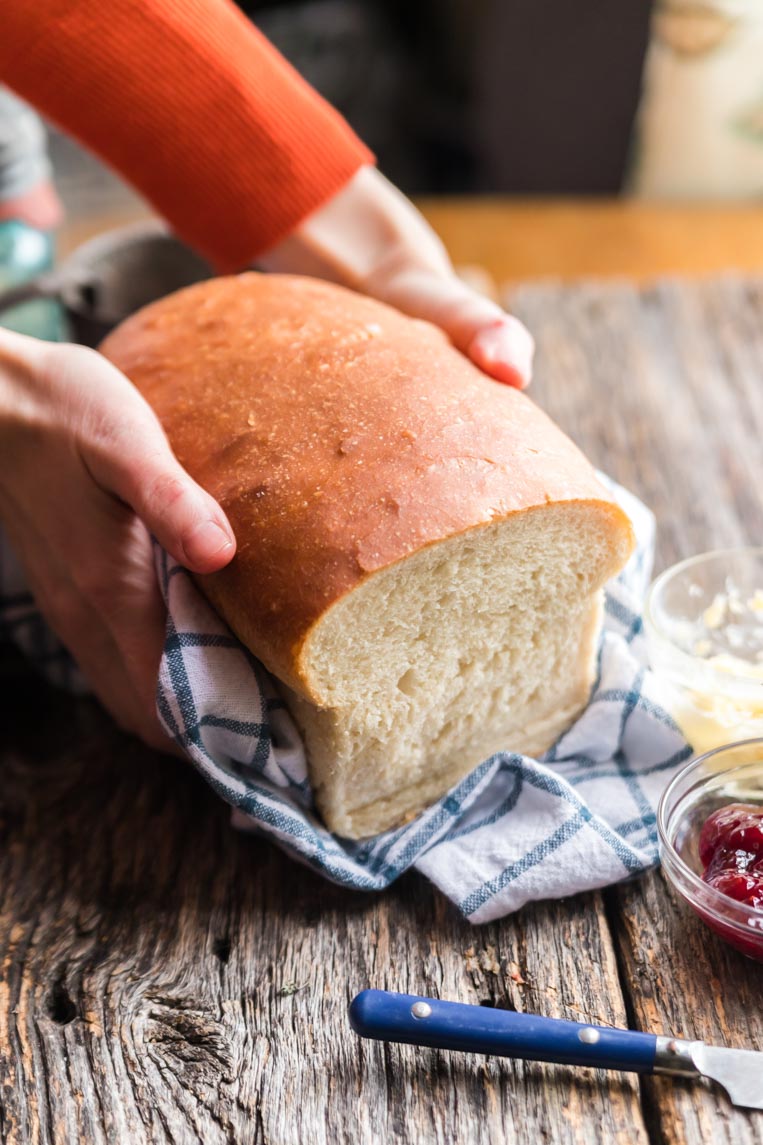
What’s the difference between wild yeast sourdough and other kinds of sourdough?
As a child, the popular sourdough starter was one made from conventional yeast (in a pack from the grocery), white sugar, potato flakes and water. It made perfectly tangy-tart bread but that’s all it was: a tangy flavor in regular white bread.
Wild yeast starters are much different. When flour and water are allowed to ferment, yeast found naturally on the wheat and from the air begin the fermentation process.
As a result, lactobacillus and yeast populate and grow–creating a living organism that’s able to digest the majority of the gluten and unlock the nutrients from flour; something no potato flake and sugar blend can do.
Wild yeast sourdough starters have been around since Egyptian times or longer and has been said to be “the world’s healthiest bread”.
Unless you buy your sourdough from a bakery who clearly discloses what type of starter they use, it’s safe to say there are no true sourdough breads anywhere in your local grocery stores or bakeries. Only what you make at home.
Is sourdough bread healthy?
Sourdough bread is healthier than store bought in some ways. Because of the long ferment times with the yeast and lactobacillus, a large portion of the gluten–up to 97%–gets digested by the microbes.
In addition, fermenting unlocks nutrients like magnesium, phosphorus, potassium and folate so the body can absorb them. The anti-nutrient phytic acid is also neutralized so your body can absorb nutrients better, too.
Is sourdough bread low carb?
No, it isn’t. While sourdough does have a bit fewer carbs than regular store bought white bread, it’s not low carb.
Store bought bread can average up to 30 grams of carbs per two slices of bread; sourdough can range between 15 and 20, so it’s a bit better but will still raise your blood sugar.
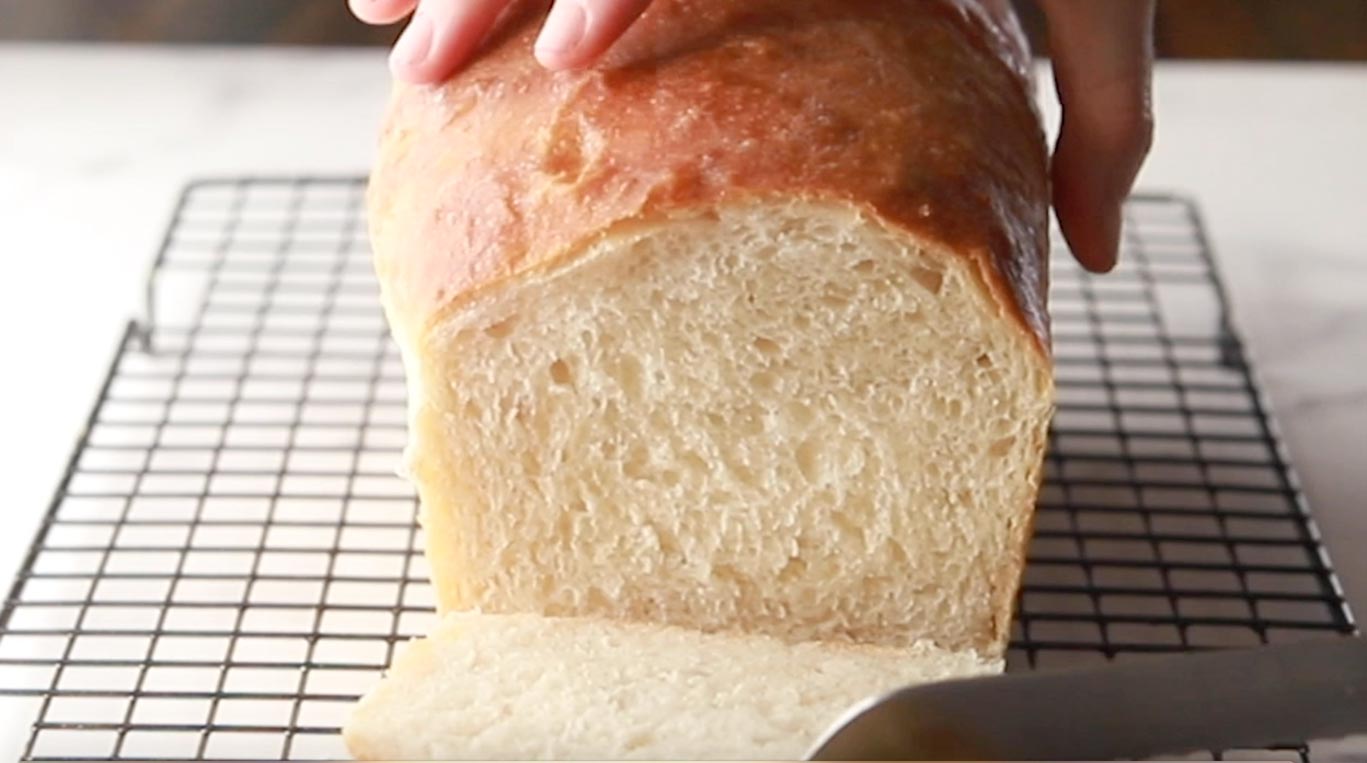
Is sourdough gluten free?
No. Lots of people misunderstand the process of sourdough and interpret the fact that much of the gluten gets digested as being “gluten free”.
Anytime a wheat flour is used to make a bread, it is not gluten free. Some of the gluten remains in a sourdough sandwich bread.
Some people who are gluten sensitive can digest and tolerate long ferment sourdough bread better than traditional breads, but those with Celiac Disease should avoid it.
You can make gluten free sourdough with a gluten free starter and dedicated gluten free sourdough bread recipe. Bakerita has a great recipe for this.
What sourdough starter do I need?
This recipe does assume you already have a true sourdough starter on hand. If you need to build one, watch this video. If you’re getting a starter from someone else, make sure it was made with only flour and water.
You can also order sourdough starters on Etsy.
How to make sourdough bread step by step
Add your active, risen starter to a bowl with warm water and warmed buttermilk.
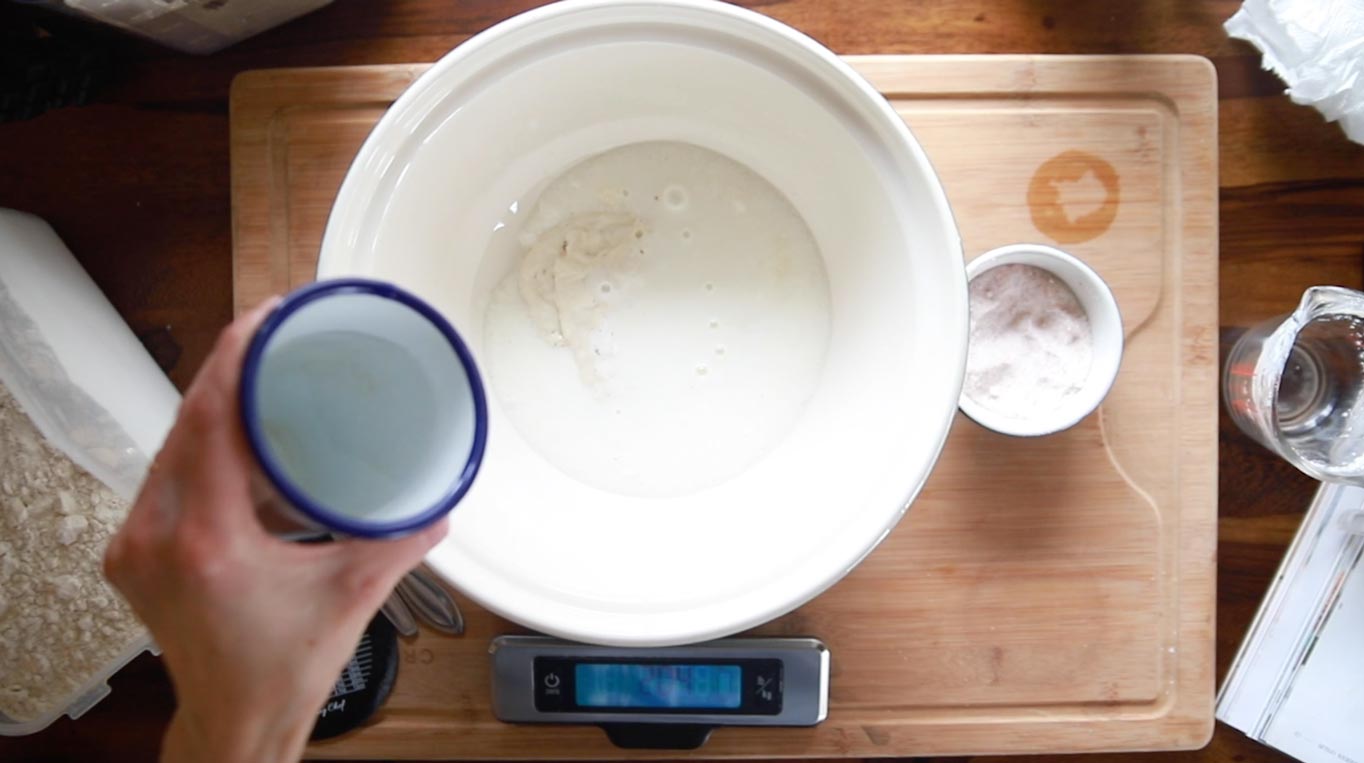
Add a flavorless oil. I use avocado oil for health benefits.
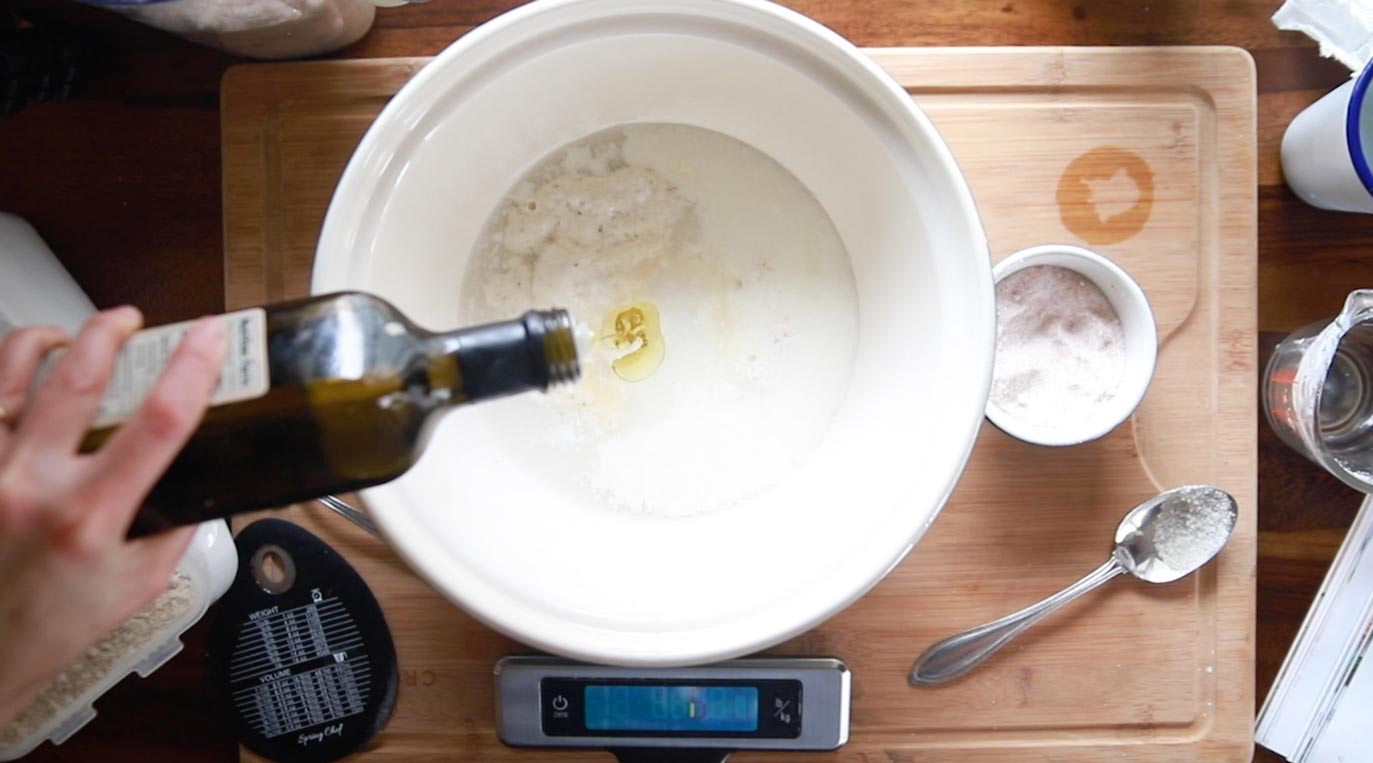
Add a blend of bread and all purpose flour. You can substitute up to half the flour for whole wheat. Add the salt with the flour to avoid slowing down or killing the microbes in your starter.
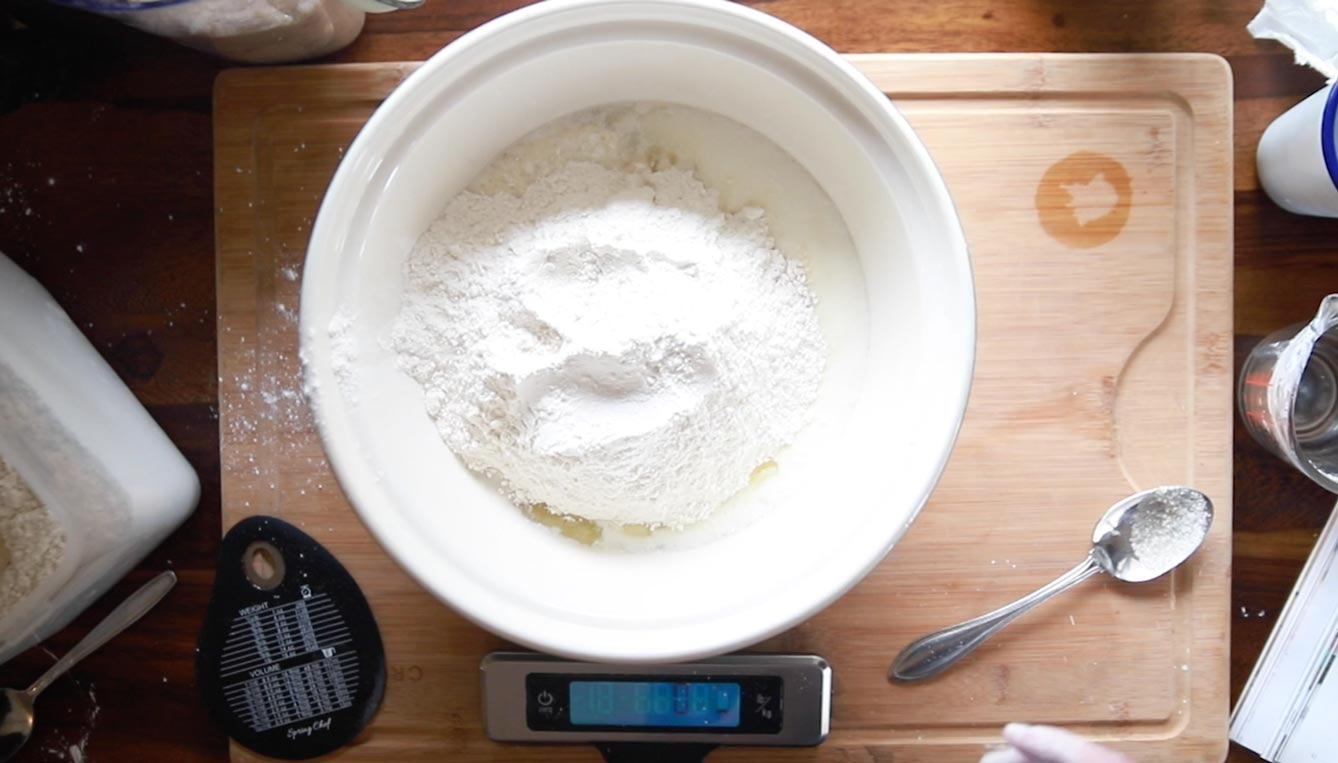
Stir to combine and make a soft dough. You may need an extra 1/4 cup of water if the dough won’t come together.
Let the dough sit 30 minutes before continuing, then knead a few times in the bowl, cover with plastic wrap and let rise overnight or at least 12 to 16 hours at room temperature.

After 12 to 16 hours, turn the dough out and use your fingers to press out a rectangle about as wide as a 9x5x3 inch loaf pan.
Roll it up like a sausage and wrap your hands around the back of the dough. Pull the dough toward you, dragging it across the countertop to tighten the surface of the dough.

Tuck the dough in the back with your fingers and repeat the pulls two or three times until the dough is tightened.
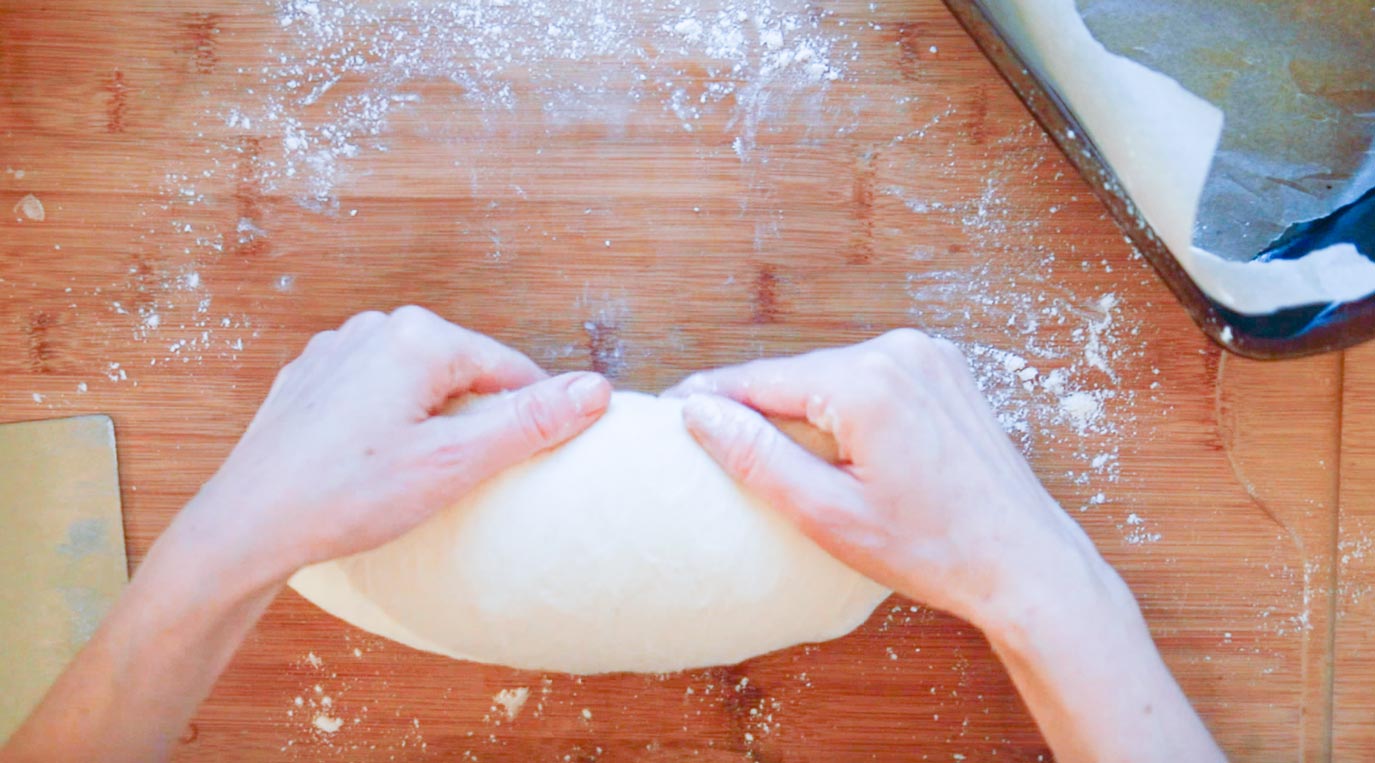
Transfer the dough to a parchment paper lined and oiled loaf pan. Cover with a damp towel or oiled plastic wrap and let rise until 1-2 inches above the loaf pan’s rim. 6 to 8 hours or more.
Bake at 400 for 40 minutes, tenting with foil after 25 minutes. The bread should be baked when the internal temperature is 180-200 degrees.
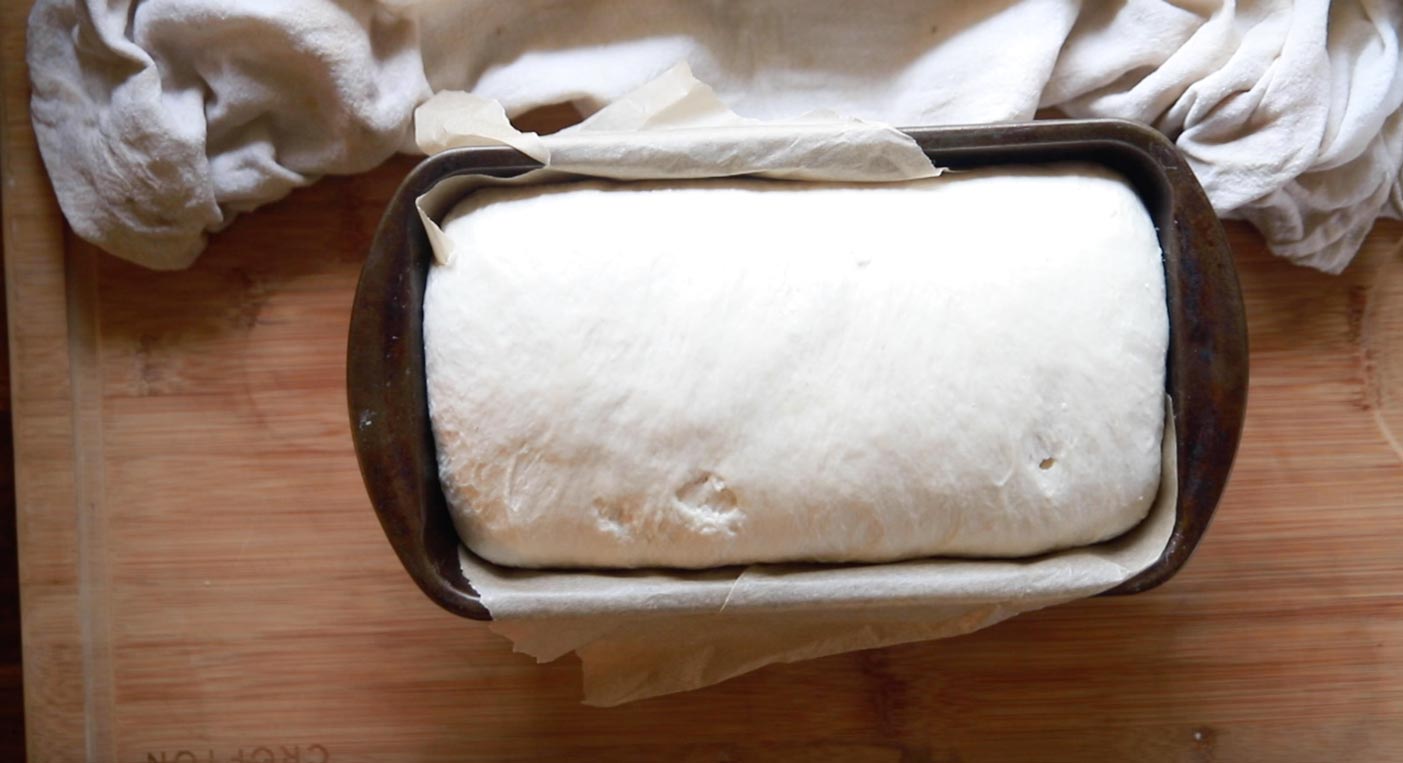
What you need to know about rise times
Bread made with a slow ferment/wild yeast starter take longer to rise. Expect your loaves to ferment for 24 to 72 hours depending on the recipe you’re using.
For this sourdough sandwich bread, the ferment is 24 hours from start to bake time, but I have gone as long as 36 hours with these loaves without issue. Sourdough breads do not rise quickly so be prepared to be patient. It’s part of the process and it’s very forgiving with a busy schedule.
For the best texture, don’t do this
It’s hard not to, but don’t cut your sourdough bread while it’s warm. Let it cool at least an hour or if you can let it sit until it’s totally cool, even better.
The steam inside the loaf is really essential in setting the texture of your bread. If you cut it too soon the loaf will get gummy and then dry out.
How to store sourdough bread
Sourdough sandwich bread is good on the counter for up to 3 days when wrapped tightly.
I usually let mine cool, then slice. Re-stack the slices and freeze in an air tight container. Take out slices as you need them and toast or let them thaw on the counter which only takes a few minutes.
Dip your loaf! Cut slices or make rolls and dig in to the best Carrabba’s bread dipping oil recipe.
Great sandwiches to make with sourdough bread
- Sourdough ham and cheese
- “California” sourdough sandwich
- Pesto chicken sandwich on sourdough
- Ribeye and onion sourdough sandwiches
- Stuffed Italian sourdough loaf
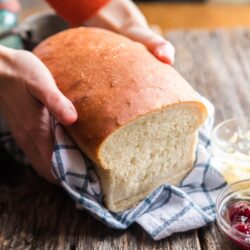
The Easiest Sourdough Sandwich Bread (Slow Ferment)
Ingredients
- 65 grams sourdough starter 1/3 cup
- 150 grams warm water unchlorinated
- 200 grams buttermilk warmed
- 12 grams cane sugar 1 tablespoon
- 15 grams avocado oil 1 tablespoon
- 400 grams bread flour 3 1/3 cups
- 100 grams all purpose flour 3/4 cup plus 1 tablespoon
- 9 grams fine sea salt 1 1/2 teaspoons
Instructions
- In the evening: In a bowl add the starter, water, sugar, and oil and stir together with a fork,
- Add the warm water and buttermilk and stir to combine.
- Add the flours and the salt on top. Use your fingers to swirl in the salt to the flour then mix the flour in to the liquids. If the dough is very shaggy or there's a lot of dry flour in the bottom of the bowl, add a few tablespoons of warm water to bring it together.
- Let the dough sit for 30 minutes, then use your hands to gently knead the bowl 6 or 8 times in the bowl until the dough is in a smoother ball.
- Cover with plastic wrap and leave to rise for 12 to 16 hours/overnight.
- In the morning, turn out the dough on to a countertop. Try not to flour it at all if you can or just very lightly.
- Use your fingers to press the dough out into a rough rectangle about as wide as your loaf pan.
- Roll the dough up like a sausage and place the seam on the bottom.
- Cup your hands on either side of the back of the dough and drag it toward yourself, tightening the surface of the bread.
- Flour your hands as needed to prevent sticking and drag the dough three or four times, then move it to a greased and parchment paper lined 9×5 loaf pan to rise.
- Cover with a damp towel or well oiled plastic wrap and allow to rise until the dough is 1 to 2 inches above the top of the loaf pan–usually 6 to 10 hours depending on how warm the room is. Re-wet the towel if it starts to dry out or it will stick to your bread!
- Preheat the oven to 400 and bake the loaf on the center rack close to the door, for 40 minutes; rotating it after 20 minutes. Tent with foil after 30 minutes to prevent over browning.
- Check your bread's temperature if needed. It should be 180-200 in the center. Let cool completely before slicing to prevent a gummy texture.


